2024 Spring Meeting Report
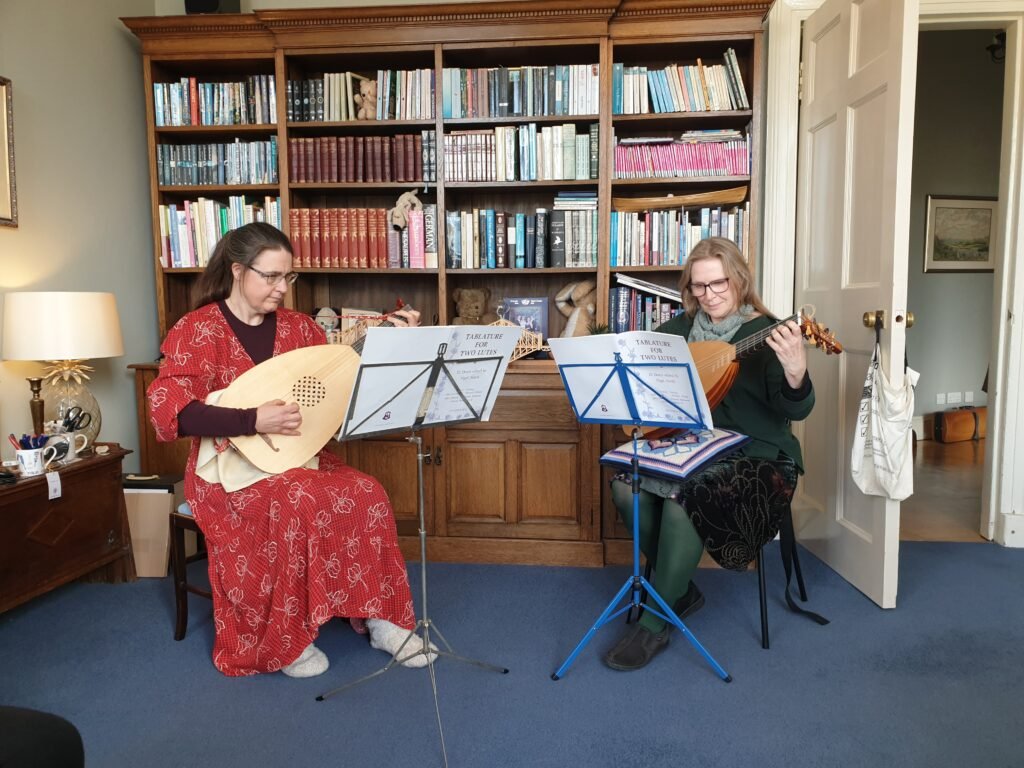
Joanna and Tanya opened our Spring meeting with a couple of duets, which is becoming a
much-loved feature of our meetings. These two Elizabethan pieces were written as duets and
allow one lutenist to play the tune while the other plays variations. The first galliard was
lively and bright, just the thing for a dance. In fact, when the Queen was aged in her mid-
fifties, John Stanhope of the Privy Chamber reported, “the Queen is so well as I assure you,
six or seven galliards in a morning, besides music and singing, is her ordinary exercise”. That
is enough to keep anyone fit but it is particularly impressive to think of her leaping around in
the weight of her gowns and jewellery.
They then played “Queens Goodnight” – Bruce remarked that she must have been very tired
from all the dancing. This piece featured lovely ascending melodies balanced out with
descending lines and several tricky sounding passages towards the end of the tune. Tanya also
told us of how she came to the lute from the flute – when living in South Australia she had
searched for lute teachers and builders and had found Tim Kersten (a tutor) and Tim Guster (a
luthier) both conveniently located within five kilometres of her. From there she studied with
Tim Kersten and purchased a Tim Guster lute which travelled all the way to Edinburgh with her.
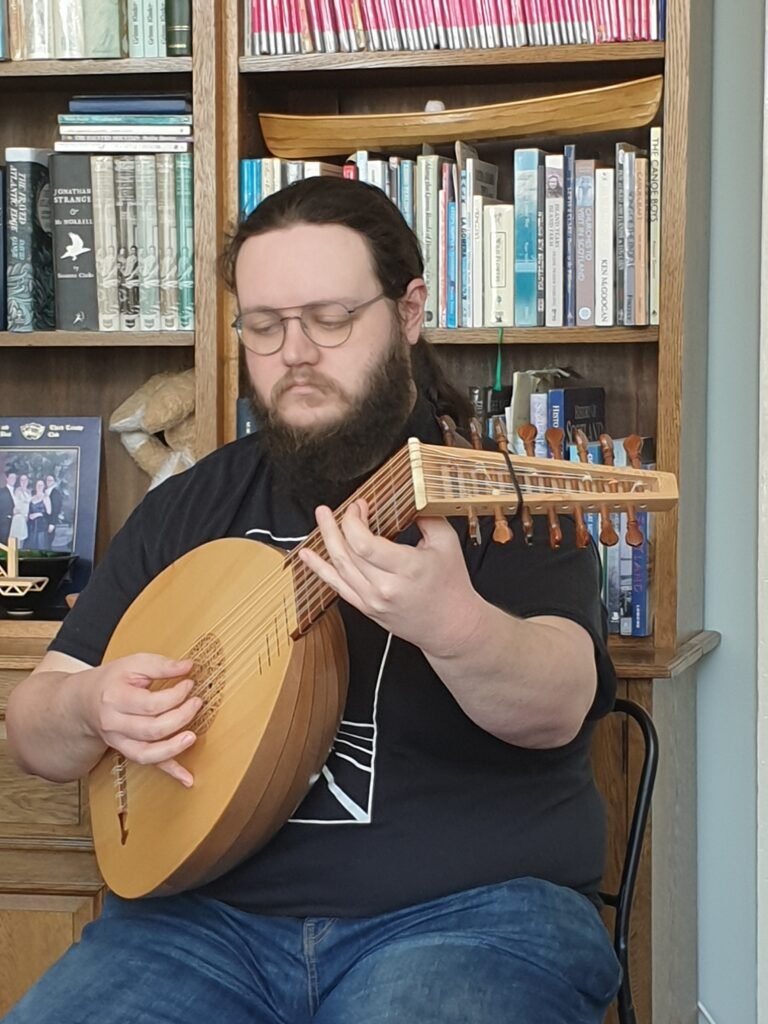
Glen Robertson delighted us with some lute playing this time. His Gaelic pronunciation was
impeccable: “Bhon A Chuir Mo Leannan Cùlaibh Rium” (Since my lover left me) followed
by “S I Mo Cheist An Gille Donn” (The brown-haired lad is my darling). These were both
from “Lute Solo Arrangements of Scottish Gaelic Airs” which is a Lute Society publication.
They were beautifully played, with Glen managing to make the lute sing. Rather different in
style was his third piece, “Spagnoletta” from a collection inscribed Pierre de Pouille dated
1609–16. Originally this was a popular flirtatious Spanish dance and Glen really managed to
get across the feel of the music. His rest strokes in the bass were nice and clear, allowing the
melody to ring out.
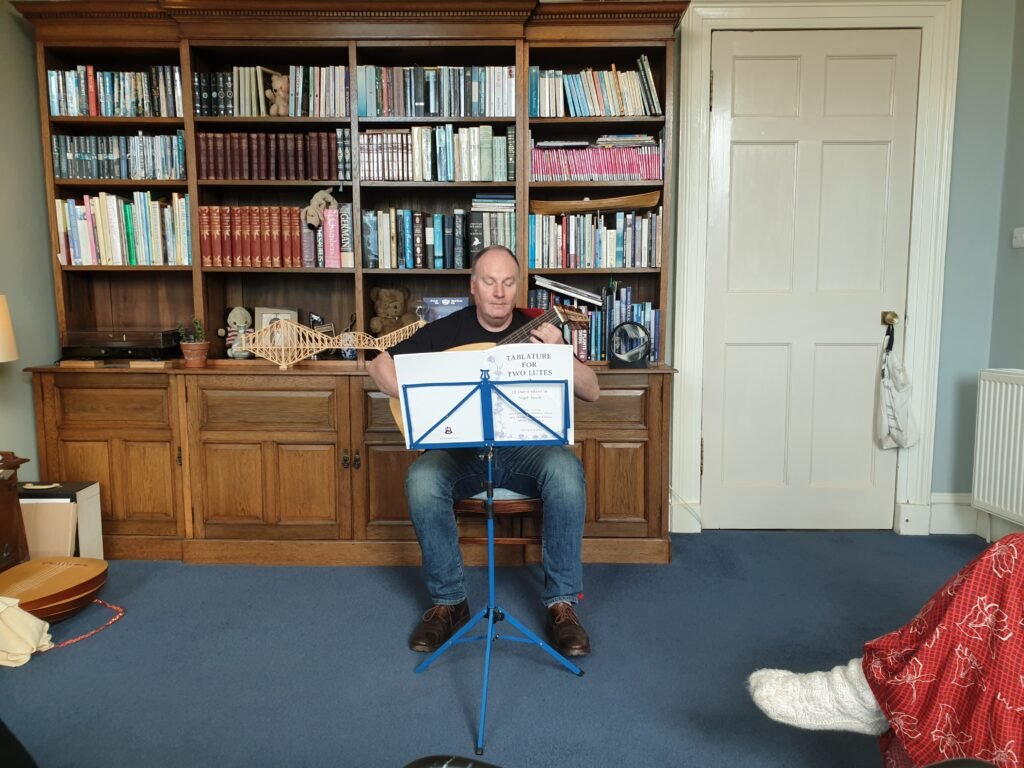
Inspired by our guest performer, Sara Salloum, at our last meeting, Bruce has been practicing
three” Toys” from the Pickering Lute Book – more specifically, one “Toy” and two “Toyes”.
Bruce captured the fun nature of the pieces which were probably written for a student to the
instrument. This of course does not make them easy, but being well rehearsed, Bruce
certainly made them seem almost effortless. He also had a personal connection to the second
Toye, for on hearing Sara play he recognised it as a piece he played on the classical guitar
when he was taking lessons as a child. As such, he chose not to play it exactly as notated in
the Pickering book, but opted to add on two extra bars to make it closer to the version he
remembered.
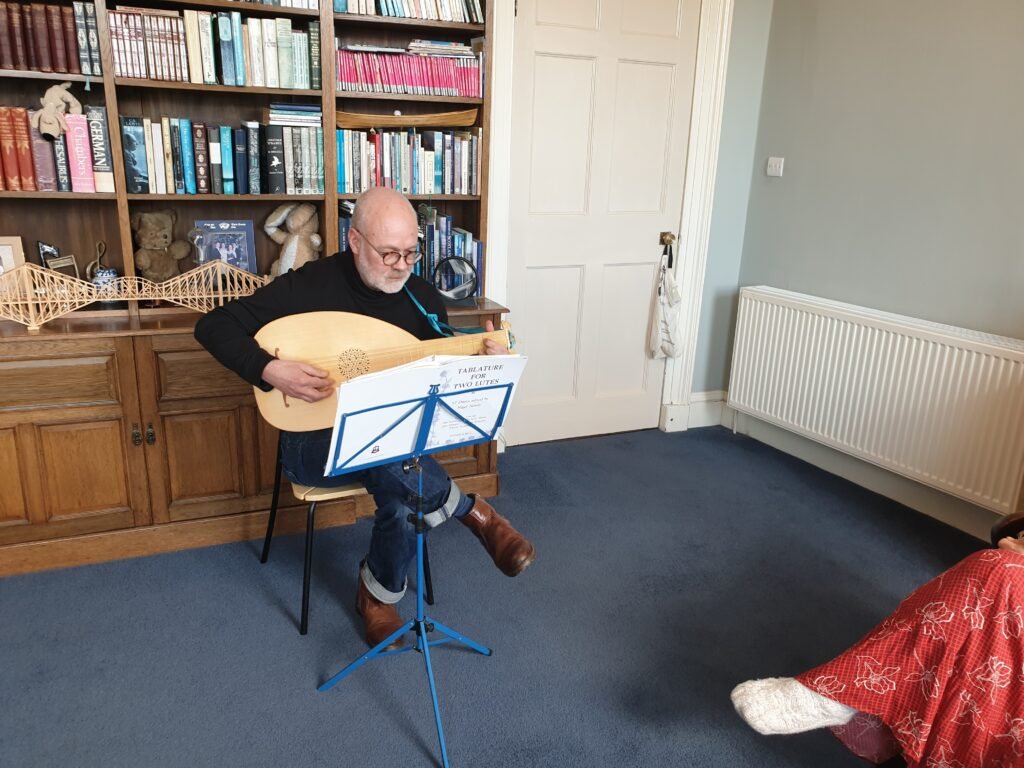
We were delighted to welcome Chris Jupp back to our players’ meeting. Chris brought along
his Luke Emmet six-course renaissance lute which is mostly strung with gut. Chris first
treated us to “Adieu Ces Bon Vins De Lannoys” which was originally arranged for plectrum lute. Although arranged this way initially, Chris’s finger-style playing suited the piece very
well. He then played a “Preambel” by Antonio Rotta. Chris impressed us all greatly by
reading from notation rather than tablature – still he did not miss a note. He then finished
with a slower piece called “Anor Che Col Partire”. All three pieces sounded wonderful with
the gut strings and our attendees agreed that it is excellent to hear the instrument played with
a sound a bit closer to the way the instruments would have sounded in their day.
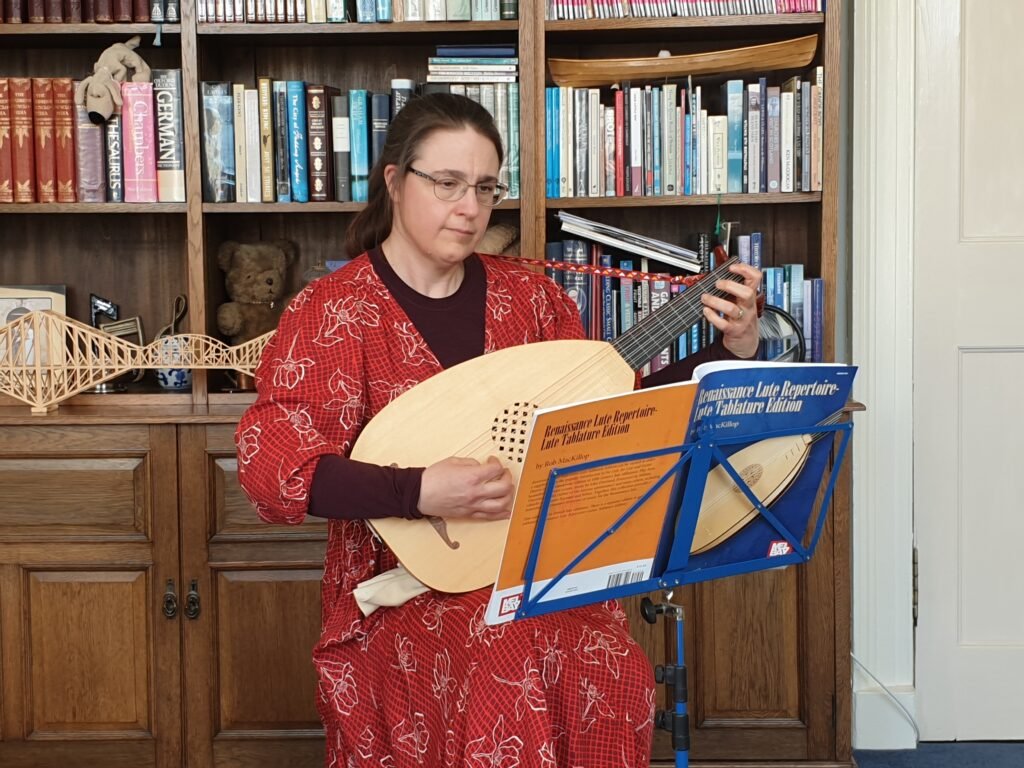
Joanna Allsop also played a solo piece on her renaissance lute, which was built by her father.
The piece was composed by Francesco Da Milano and read from “Renaissance Lute
Repertoire” by our own society co-founder Rob MacKillop. The piece featured a number of
melodious passages and tricky chord shapes, which Joanna deftly switched between. Clearly
her time in the online Lute Circle lesson groups has been well spent. Joanna regards this
piece as being “too beautiful” to play, but why should we let that hold us back?

Multi-instrumentalist Luisa McMinn had decided to bring her seven-course Barber & Harris
lute to our meeting. Firstly, Luisa wanted to play two pieces which she performed at our
previous meeting; a “Coranto” from the Rowallan Lute book, and “Elslein Liebstes Elslein
Mein” by Neuslider. Luisa managed to shape the melodies and basslines of the pieces with
great skill, showing that even when performance-ready, a good musician is always open to
improvement! A bit of practice never hurt anyone after all. Luisa then finished on a
“Fantasia” by Luis Milan. The tune rang sweet and clear under Luisa’s fingers and we were
glad to hear her play lute again.
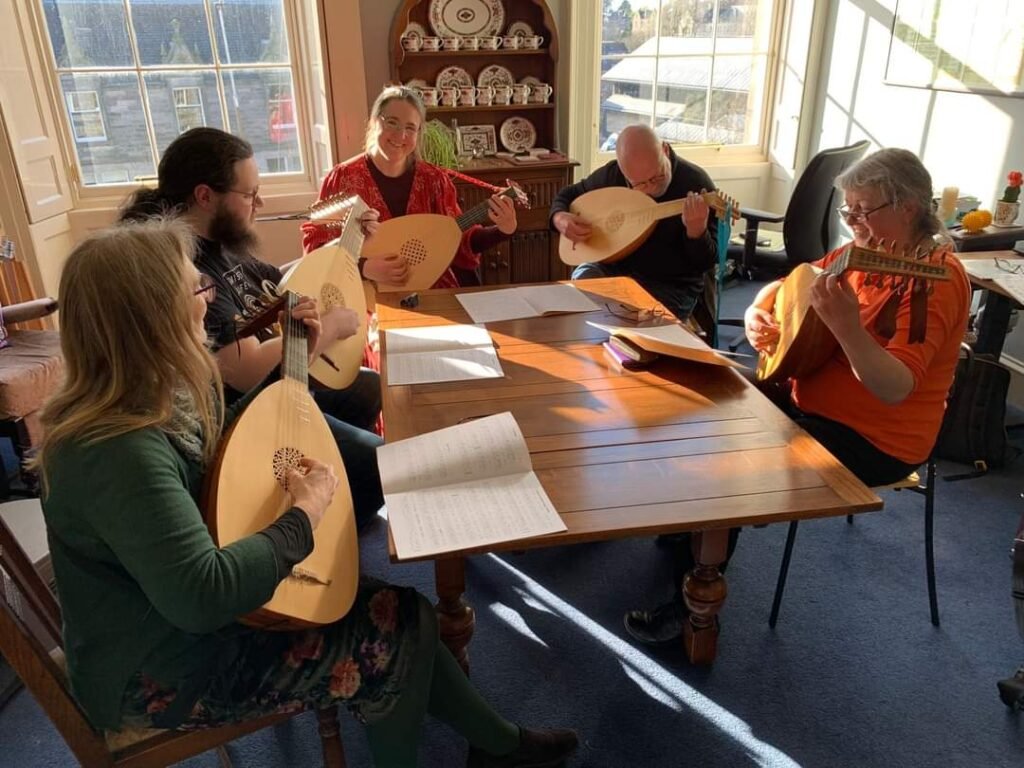
After a break for tea and cake, and in absence of a guest performance, Joanna proposed that
we could try some ensemble playing from her Dowland part-books. However, before we
could play, we needed to start as every early music ensemble starts – by deciding what pitch
we were tuning to! After deciding four to one on 440 Hz (sorry Chris) we all had a go at
sight-reading “Lachramae”, “Frog Galliard” and “King of Denmark’s Galliard”. We all took
great delight in doubling up on parts, swapping books with people who had the necessary
courses, and even being caught out by trying to find the n fret on our instruments. In a no-
pressure environment, dropped notes and skipped beats are all part of the fun, but everyone
did a great job with their parts and we started to sound remarkably good for a group who had
only been playing together for mere minutes. Hopefully we will get a chance to play as a
group again at our next meeting in May.
